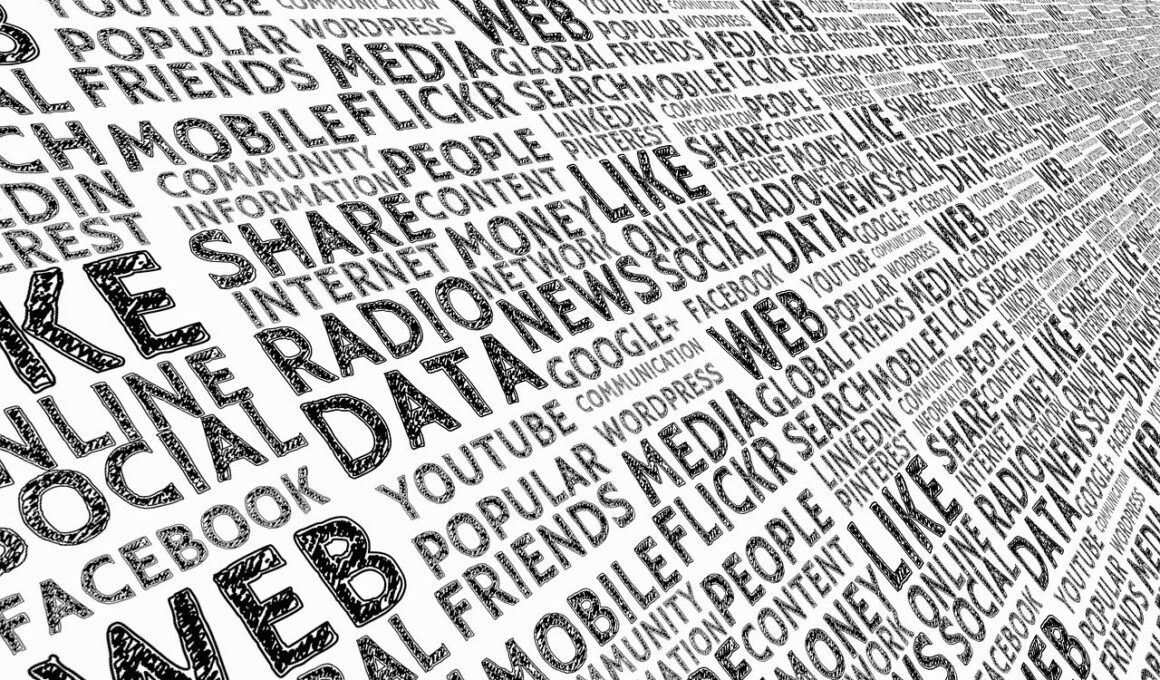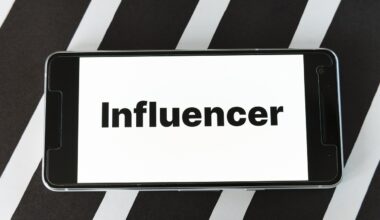Case Study: Controlling Misinformation about Healthcare Services on Social Media
Social media serves as a powerful tool for communication and information dissemination, especially in healthcare. Healthcare providers must grapple with the consequences of misinformation circulating widely on social platforms. The rapid spread of incorrect information can lead to public confusion, reduced trust in healthcare systems, and even compromised patient safety. Understanding effective crisis management strategies on social media is crucial for healthcare professionals. Engaging stakeholders through targeted campaigns can mitigate harmful misinformation. Additionally, having a predefined communication strategy is essential when misinformation is identified. Monitoring social media for discussions about healthcare issues allows providers to respond promptly and effectively. Educating the public through clear, accurate posts can help counteract false narratives. Leveraging influencers and experts can also boost the credibility of corrections to misinformation. It is vital to evaluate the crisis response’s effectiveness using metrics such as engagement rates and sentiment analysis. By analyzing these responses, healthcare organizations can develop better crisis management protocols in the future. Ultimately, success in social media crisis management lies in proactive communication, creating a trust-based relationship with the public, and fostering an environment conducive to accurate information dissemination.
Healthcare providers can enhance their social media strategies by closely examining past crises. Once a crisis develops, timely responses are critical to prevent further escalation. Taking immediate action helps protect the entity’s reputation while providing important educational content to the public. Establishing a multidisciplinary crisis management team is a beneficial strategy. This team should include healthcare professionals, public relations experts, and social media managers. Together, they can respond swiftly to address misinformation, providing accurate insights. Crafting clear, concise messages is essential in these situations. For example, if rumors circulate about a vaccine’s side effects, a healthcare provider can issue an informative post outlining facts backed by research. Furthermore, healthcare organizations may use social media platforms to initiate discussions surrounding specific health topics. It is also beneficial to establish strong partnerships with credible organizations to lend support to communicated facts. Utilize hashtags to extend the reach of educational messages across platforms. These methods can enhance visibility and ensure that accurate information reaches a broader audience. Evaluating the strategy’s effectiveness involves studying public feedback to adjust future crisis management plans successfully. This ensures that future misinformation crises can be managed more effectively.
Another key component in handling misinformation on social media is understanding the audience and crafting messages that resonate with them. Tailoring content to target demographics increases the likelihood of engagement. For instance, engaging effectively with younger audiences might require different messaging compared to older adults. Utilizing visual content, such as infographics and videos, can significantly enhance information retention and understanding. Social media algorithms favor engaging, visually appealing content, meaning posts that include images or animations will likely reach a larger audience. To further this goal, healthcare organizations can collaborate with skilled graphic designers to create compelling visuals. Consistency in messaging across all platforms reinforces credibility and assures the public that they are receiving the same quality information everywhere. In addition, healthcare organizations should strive to maintain an approachable tone in their interactions. Encouraging dialogue rather than issuing commands helps build community trust. Additionally, actively engaging with followers by responding to their questions can alleviate fears and misunderstandings. Monitoring engagement analytics provides valuable insights into what resonates with the audience. By analyzing this data, healthcare providers can personalize and improve future communication efforts effectively. Hence, engaging the community in the right ways ultimately fosters a more informed public regarding healthcare services.
Lessons Learned from Previous Crises
Analyzing past crises helps healthcare organizations refine their social media crisis management techniques. One significant lesson is the necessity of preemptive planning. Preparation can significantly reduce response times when misinformation is identified. Ensuring that all team members understand their roles during a crisis is essential before any response is necessary. Regular training and simulations can enhance their readiness to tackle unforeseen situations effectively. Another important lesson is the value of employing trusted spokespersons to communicate on behalf of healthcare organizations. Public figures who have credibility may help disseminate accurate information that resonates more with their followers. Building relationships with these figures beforehand can facilitate rapid outreach during a crisis. Effective communication should also utilize multiple formats such as written posts, video content, and live Q&A sessions to address public concerns. Furthermore, ongoing engagement with the audience even in non-crisis times fosters familiarity and a sense of community. This becomes beneficial during crises, as the audience feels more connected and trusts the organization. Ultimately, focusing on proactive planning and established relationships can significantly influence how successfully misinformation is managed in healthcare settings through social media crises.
Healthcare organizations must leverage analytics tools to enhance their social media responses. These tools provide valuable insights into audience behavior and engagement trends critical to crisis management. For instance, monitoring the frequency of misinformation can help organizations become proactive rather than reactive. Noticing patterns may indicate when and where misinformation typically arises, allowing organizations to strategize in advance. In addition, sentiment analysis can gauge public perception regarding specific issues or decisions, guiding the messaging strategy. Engaging the public to gather feedback allows healthcare organizations to understand better what resonates with their audience. Regularly evaluating performance metrics, such as reach, likes, shares, and comments, can also inform and improve content strategies. Moreover, implementing geographic analysis methods can help localize messages, targeting specific regions or communities that may be most affected by misinformation. This localized approach ensures relevance and increases engagement. By actively employing analysis in planning initiatives and responding to crises, healthcare providers can create informed strategies that address misinformation effectively. Continuous monitoring and adjustment allow for adaptive management, which is essential in rapidly evolving social media landscapes.
Creating Trust Through Engagement
Engagement plays a vital role in fostering trust between healthcare providers and the public, especially when tackling misinformation. Constant interaction through responding to questions, comments, and private messages creates a sense of community. This communication allows the public to feel valued, ultimately enhancing their trust in the information shared. Encouraging audience participation through polls or surveys fosters inclusiveness, allowing them to express concerns and opinions on healthcare topics. Using live videos for announcements can humanize healthcare providers by presenting practitioners engaging directly with audiences. Sharing success stories from patients or communities can demonstrate the effectiveness of healthcare services and counter misinformation. Additionally, educational campaigns can be utilized to inform followers about various health topics, softening the blow of misinformation when it arises. Moreover, incorporating authentic testimonials from patients creates a more relatable narrative. These narratives resonate more with the public than clinical facts alone. Regularly sharing updates on research and public health ensures the community remains informed about relevant issues. Ultimately, reinforcing open communication and prioritizing relationships allows healthcare organizations to solidify trust and enhance their ability to manage misinformation crises proficiently.
In conclusion, managing crises involving misinformation in healthcare through social media requires strategic planning and community engagement. The need for effective communication is paramount, especially in a digital landscape flooded with information. Health organizations must prioritize transparency in their interactions while disseminating factual data to combat misinformation’s influence on public perception. Healthcare organizations can enhance their responsiveness by employing each outlined strategy from monitoring to community engagement effectively. Crisis management should not only focus on damage control but encompass values that prioritize education and community trust. By building strong relationships with audiences, healthcare providers can create lasting trust that solidifies their presence as credible sources of information. Collaborating with influencers and using targeted campaigns allows for outreach beyond existing audiences. Additionally, regular evaluations of strategies will lead to adapting and improving methods to meet ever-changing challenges. Misinformation is unavoidable, but it becomes manageable with proactive strategies. Creating partnerships and investing in relationship-building can support communities during crises. Addressing misinformation helps maintain the integrity of healthcare systems and ensures safe and informed communities. Thus, effectively guiding social media presence offers a pathway to greater public health awareness and understanding.



